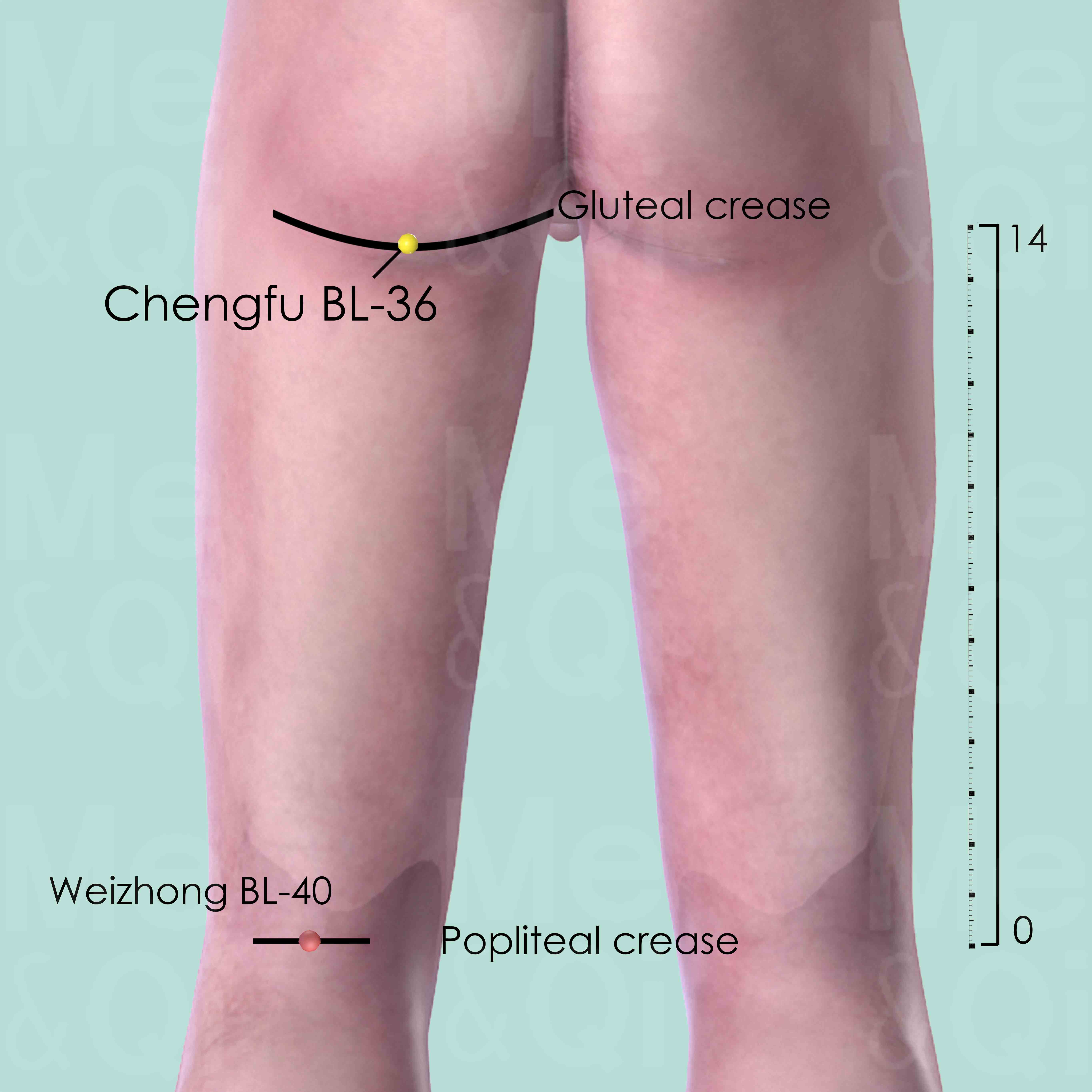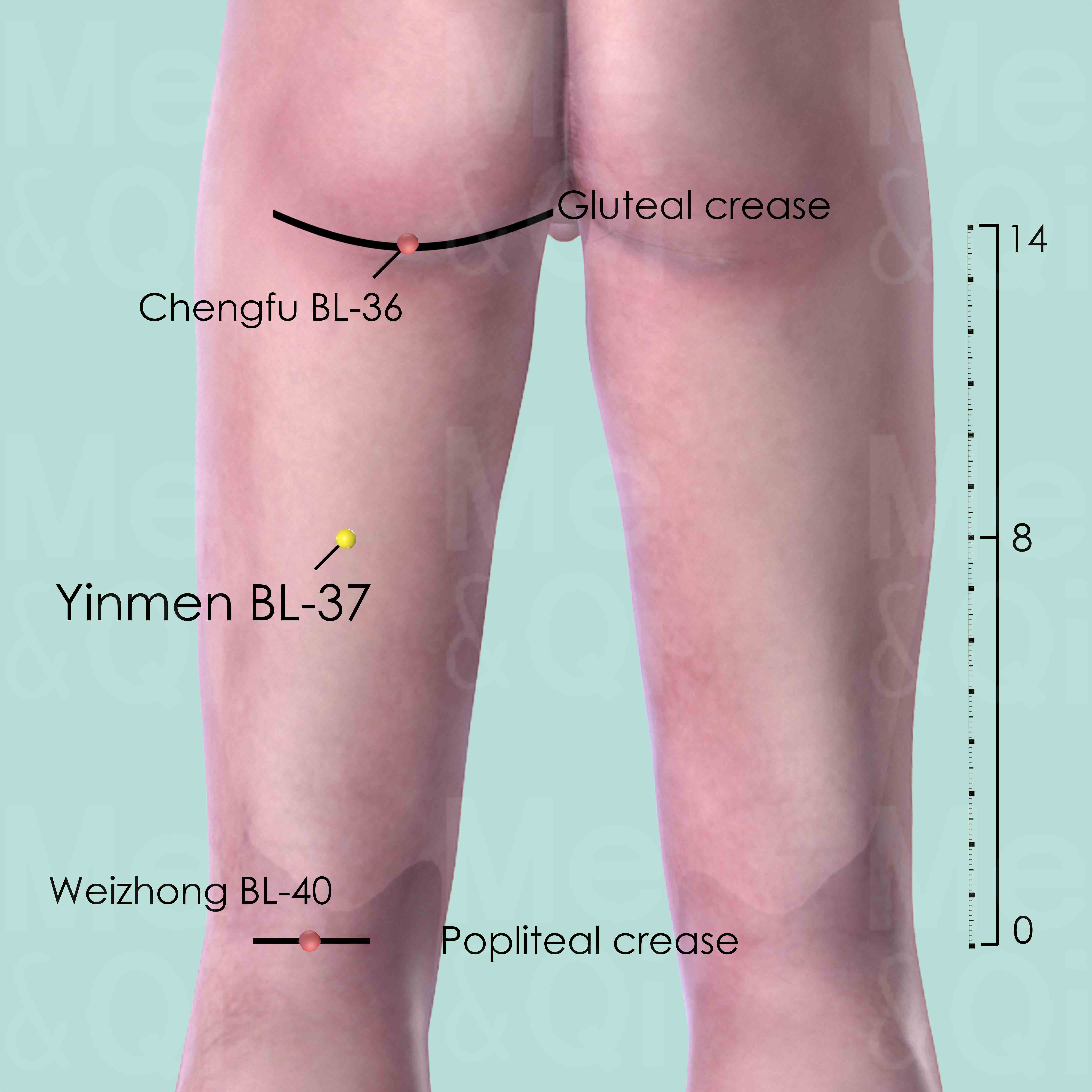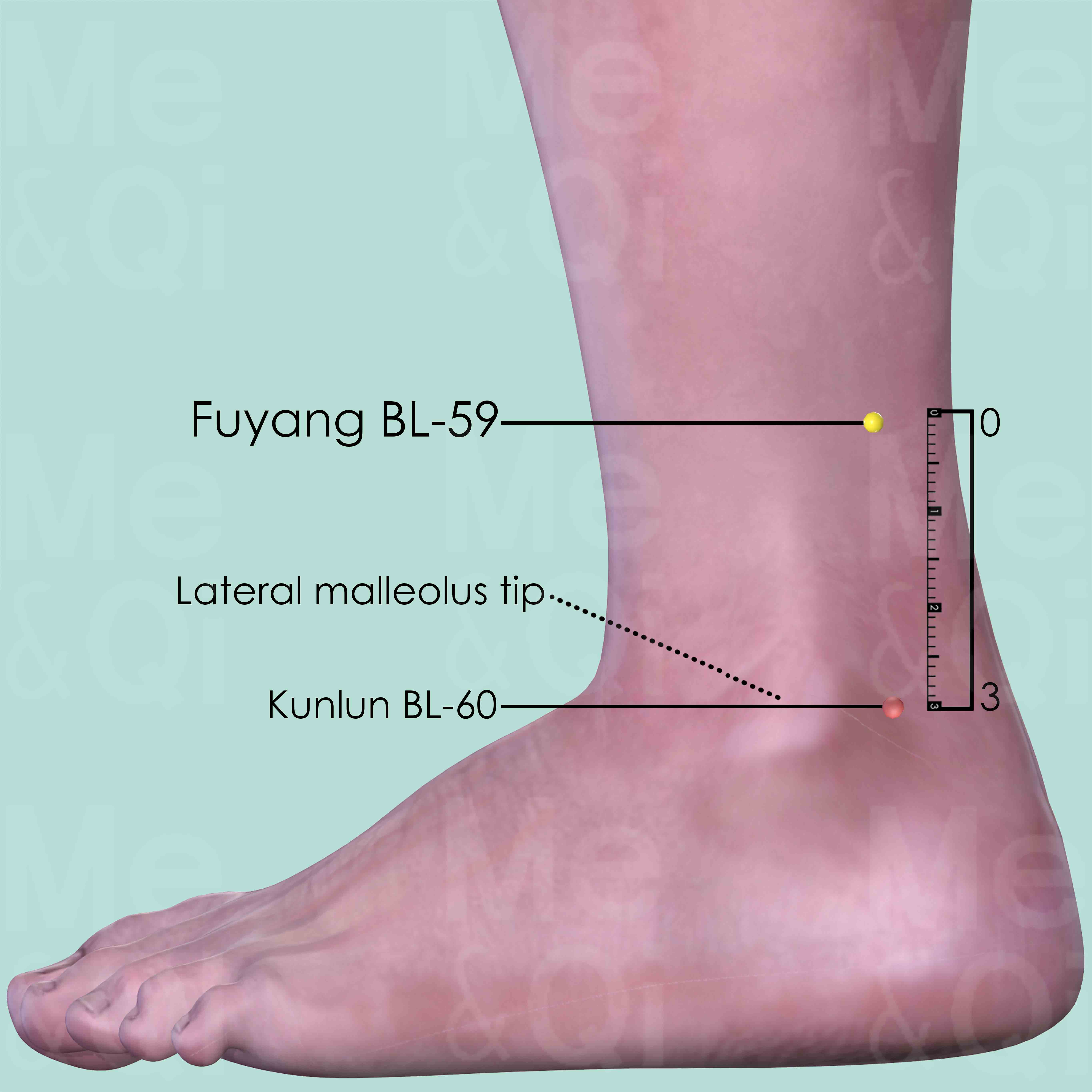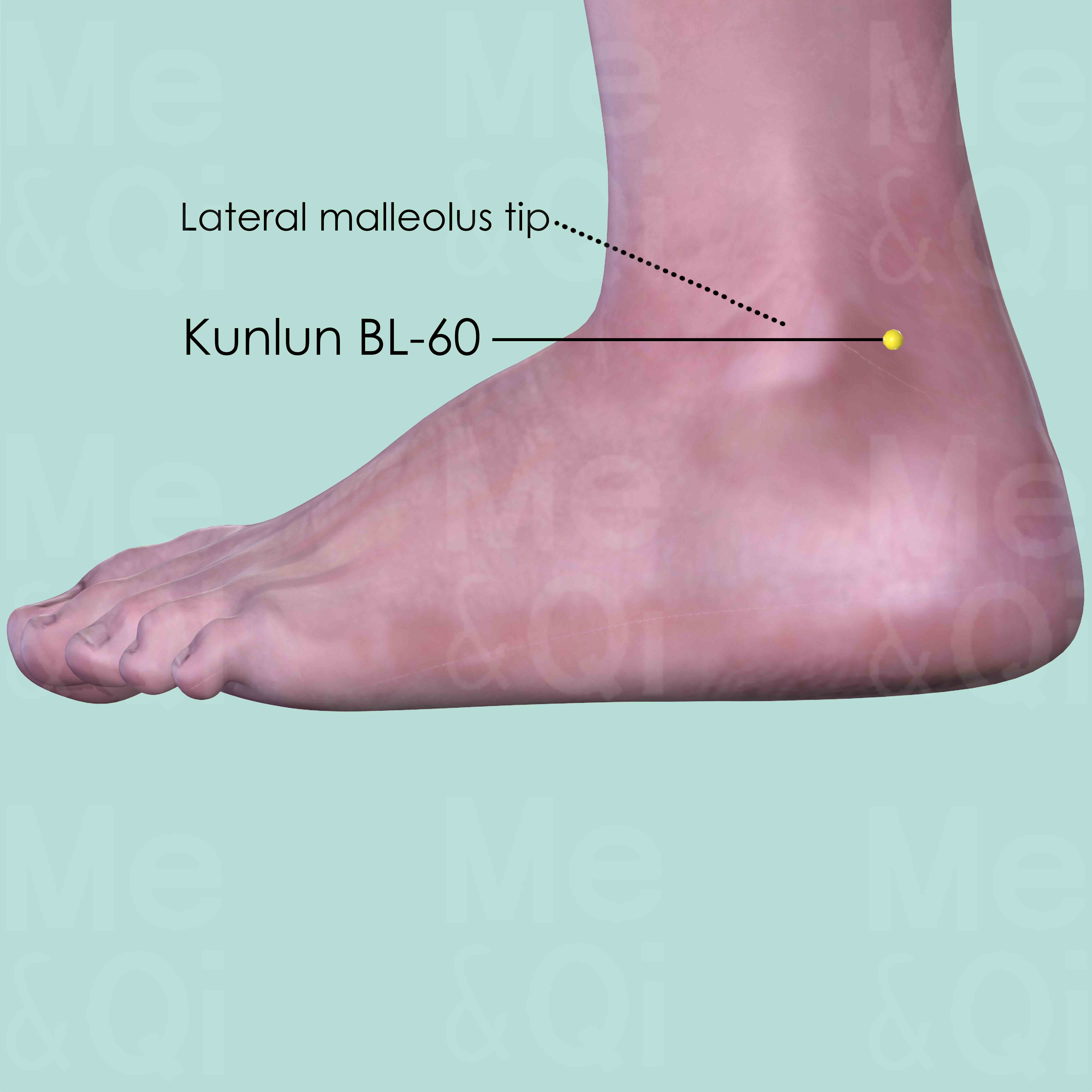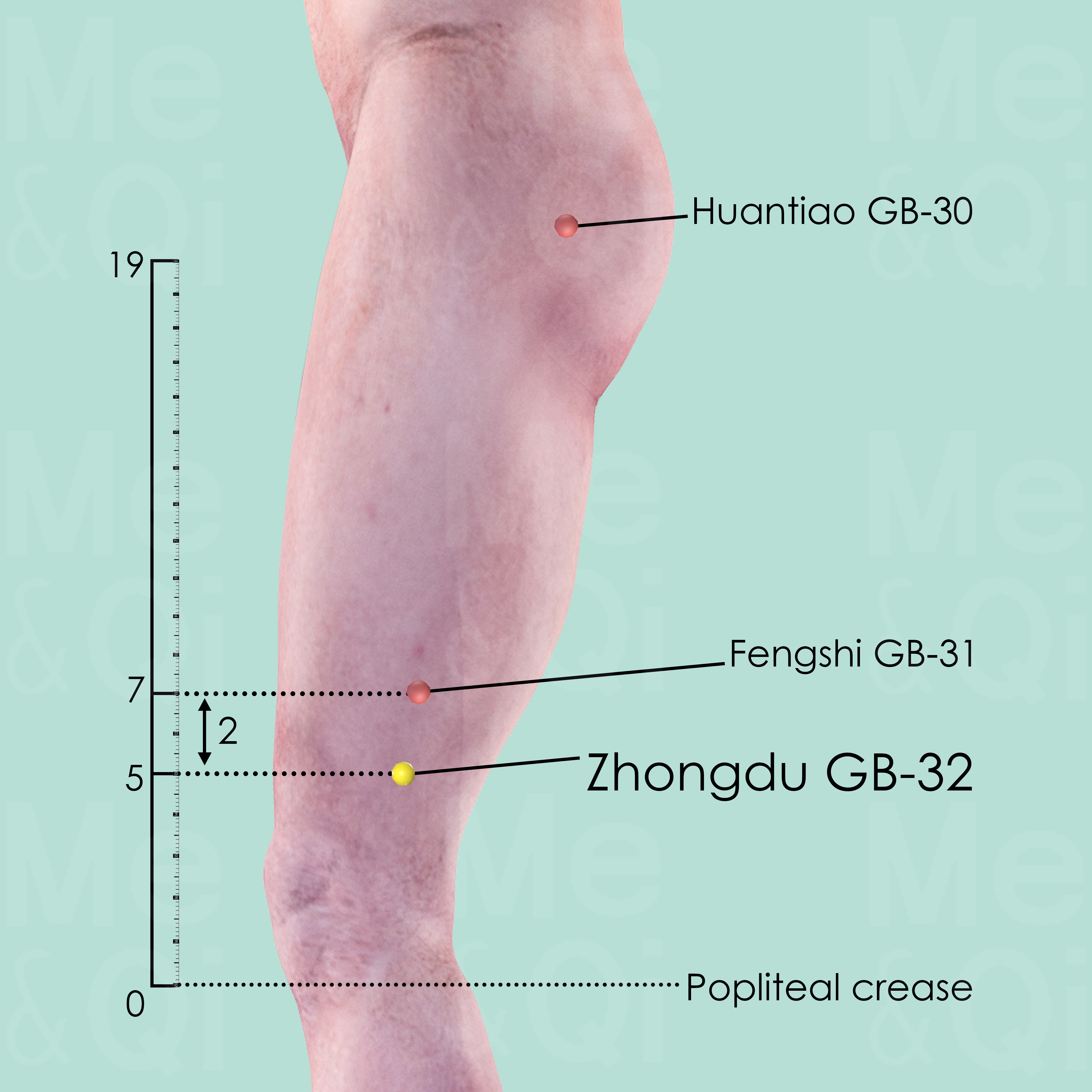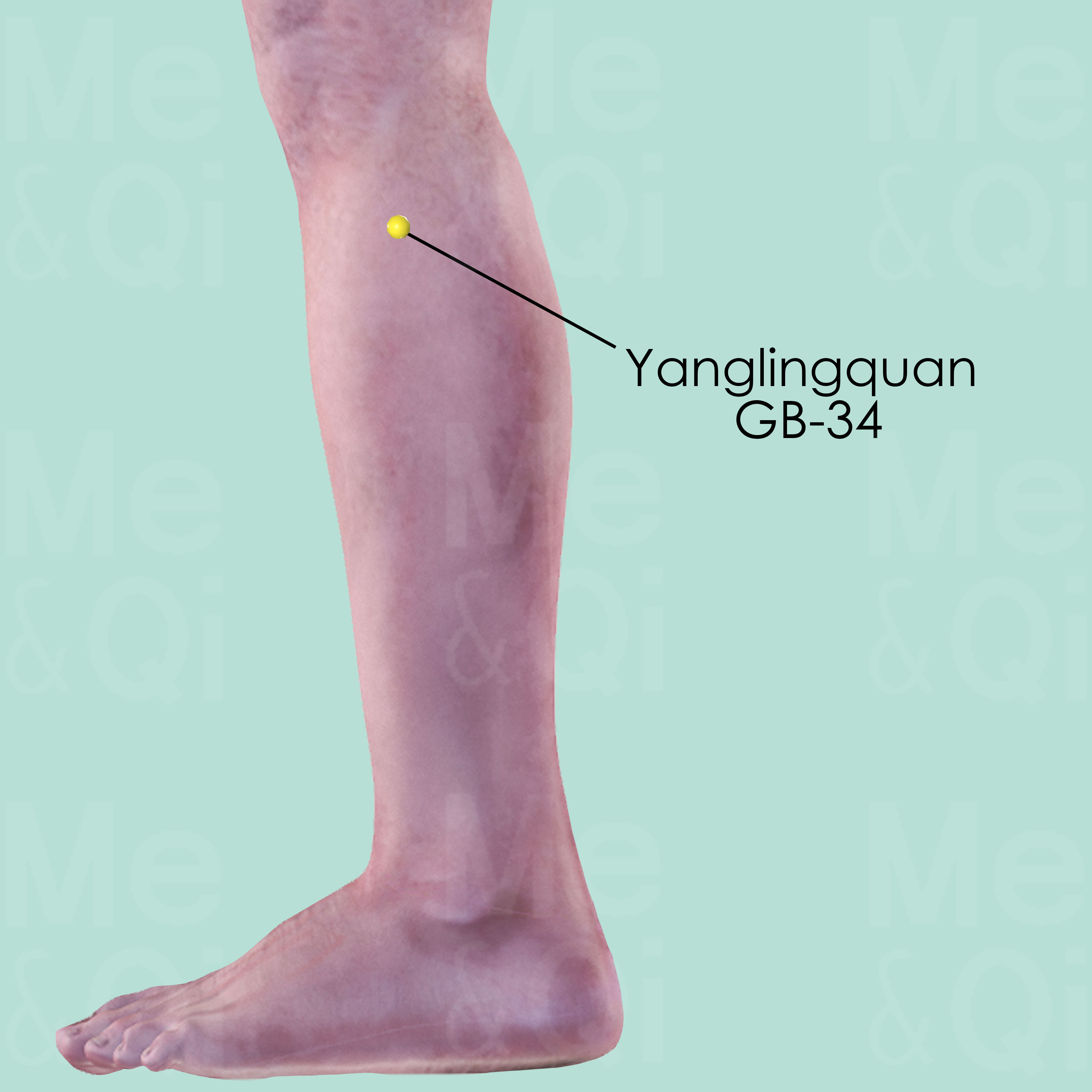Sciaticaaccording to TCM
Symptom families: Neurological Disorders, Legs disorders and Symptoms
What is Sciatica?
Sciatica, often characterized by pain radiating along the sciatic nerve pathway, emerges from the lower back, traverses the hips and buttocks, and extends down one leg. Common in individuals with herniated disks or bone spurs in the spine, sciatica’s symptoms include lower back pain, tingling, or numbness in the legs. Its severity can range from mild discomfort to acute pain that hinders everyday activities.
How Does TCM View Sciatica?
Traditional Chinese Medicine (TCM) perceives sciatica through the lens of Qi and Blood flow within the body. Unlike Western medicine, which often attributes sciatica to physical nerve compression, TCM focuses on identifying and rectifying imbalances or obstructions in the body's energy, such as Qi or Blood.
TCM practitioners consider factors like Wind, Cold, and Dampness, which can invade the body and contribute to sciatic pain, emphasizing the necessity of restoring harmonious Qi flow for relief and healing.
Causes of Sciatica According to TCM
In TCM, sciatica is often linked to Qi And Blood Stagnation and the invasion of pathological factors such as Dampness into the body's Channels. Qi And Blood Stagnation can lead to sharp, stabbing pain along the sciatic nerve, while Dampness accumulation obstructs Qi flow, causing pain and discomfort.
These conditions are often compounded by deficiencies in the Liver and Kidney systems, vital for maintaining Qi and Blood flow. TCM treatments aim to address these root causes, restoring balance and alleviating pain.
TCM Herbal Formulas for Sciatica
TCM offers various formulas to alleviate sciatica, targeting specific underlying patterns. For Blood Stagnation, formulations like Dang Gui Shao Yao San, enriched with White Peony Roots, and Shu Jing Huo Xue Tang, containing Dong quai, are effective in invigorating Blood and reducing pain.
In cases involving Wind-Damp invasion, formulas such as Du Huo Ji Sheng Tang and Gui Zhi Shao Yao Zhi Mu Tang, with herbs like Pubescent Angelica Roots, are used. Formulations like Da Huang Fu Zi Tang and Huang Qi Gui Zhi Wu Wu Tang warm the Meridians and disperse Cold, addressing sciatica associated with Cold and Blood Stagnation. For those with underlying Yang Deficiency, Zhen Wu Tang is often prescribed.
Explore below some TCM herbal formulas used to address sciatica, organized by formula type.
- By Formula Type
- Formulas that invigorate blood and dispel blood stagnation
- Formulas that dispel wind-Damp
- Formulas that warm and purge
- Formulas that warm the meridians and disperse cold
- Formulas that clear wind-Cold
- Formulas that clear exterior disorders with interior deficiency
- Formulas that tonify blood
- Formulas that regulate blood
- Formulas that release the exterior and warm the interior
- Formulas that warm and transform water and dampness
Formulas that invigorate Blood and dispel Blood Stagnation
Sciatica can be treated by these formulas if it arises from poor blood circulation or stagnation of blood, which often manifests in pain or swelling.
One such formula is Dang Gui Shao Yao San, with white peony root as a key herb.
Other formulas of this category are listed in the table below.
All "formulas that invigorate blood and dispel blood stagnation" recommended for sciatica
Formulas that dispel Wind-Damp
Sciatica can be treated by these formulas when it arises from a pathogenic influence of wind combined with dampness, which often obstructs the flow of Qi and Blood.
One such formula is Du Huo Ji Sheng Tang, with pubescent angelica root as a key herb.
Other formulas of this category are listed in the table below.
All "formulas that dispel wind-Damp" recommended for sciatica
| Formula | Key herbs |
|---|---|
| Du Huo Ji Sheng Tang | Pubescent Angelica Roots (Du Huo) |
| Gui Zhi Shao Yao Zhi Mu Tang | Cinnamon Twigs (Gui Zhi) |
Formulas that warm and purge
Sciatica can be treated by these formulas if it stems from cold accumulation coupled with excess conditions, necessitating warming and purging actions.
One such formula is Da Huang Fu Zi Tang, with prepared aconite as a key herb.
Formulas that warm the Meridians and disperse Cold
Sciatica can be treated by these formulas if it results from cold obstructing the meridians, leading to pain or stiffness, requiring warming and dispersing actions.
One such formula is Huang Qi Gui Zhi Wu Wu Tang, with milkvetch root as a key herb.
Formulas that clear Wind-Cold
Sciatica can be treated by these formulas when it stems from external pathogenic influences characterized by cold and wind symptoms.
One such formula is Ma Huang Tang, with ephedra as a key herb.
Formulas that clear Exterior disorders with Interior deficiency
Sciatica can be treated by formulas that clear Exterior disorders with Interior deficiency if it arises from an external pathogen attacking a body with underlying weakness.
One such formula is Ma Huang Xi Xin Fu Zi Tang, with ephedra as a key herb.
Formulas that tonify Blood
Sciatica can be treated by these formulas when it is due to blood deficiency, requiring blood-nourishing and enriching actions.
One such formula is Shao Yao Gan Cao Tang, with white peony root as a key herb.
Formulas that regulate Blood
Sciatica can be treated by these formulas when it stems from irregularities or imbalances in the blood, which may affect circulation or cause other blood-related issues.
One such formula is Shen Tong Zhu Yu Tang, with peach kernel as a key herb.
Formulas that warm and transform water and Dampness
Sciatica can be treated by these formulas if it is due to cold-dampness obstructing the body's functions, requiring warming and damp-transforming actions.
One such formula is Zhen Wu Tang, with prepared aconite as a key herb.
Acupoints for Sciatica
TCM also recommends specific acupoints for treating sciatica. These acupoints, located along the Bladder and Gall Bladder channels, are selected for their efficacy in removing obstructions from the Channel, treating hemorrhoids, regulating the Lower Burner, and facilitating urination and defecation.
For example, Chengfu BL-36, located in the gluteal crease, and Huantiao GB-30, at the junction of the thigh, are often used. Additionally, acupoints like Fengshi GB-31 on the thigh and Yanglingquan GB-34 near the fibula are chosen for their ability to expel Wind and resolve Dampness, which are crucial in alleviating sciatic pain.
Explore below some acupoints used to address sciatica, organized by meridian.
- By Meridian
- Bladder Channel
- Gall Bladder Channel
- Stomach Channel
- Governing Vessel
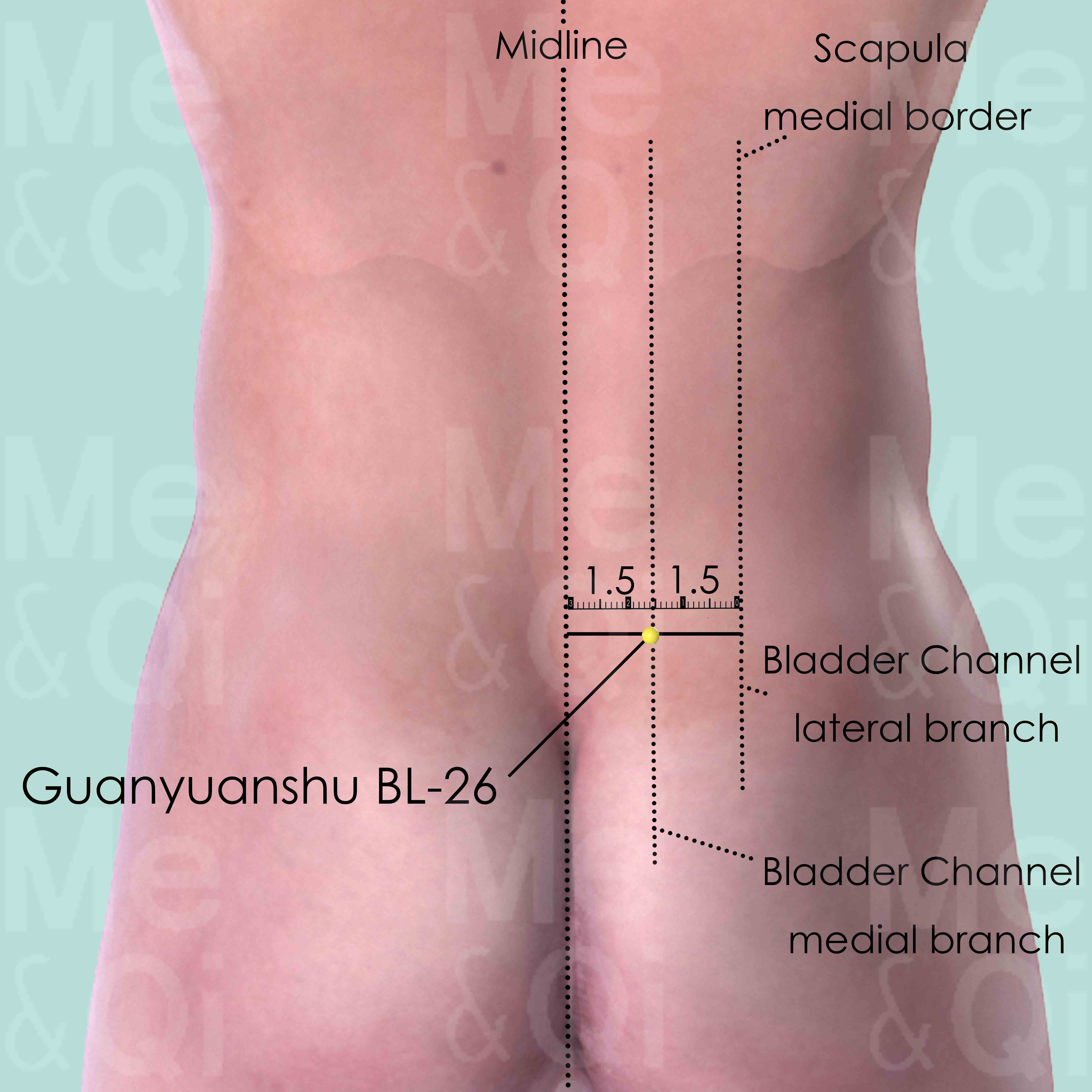
Guanyuanshu BL-26
1.5 cun lateral to the lower border of the spinous process of the 5th lumber vertebra (L5).
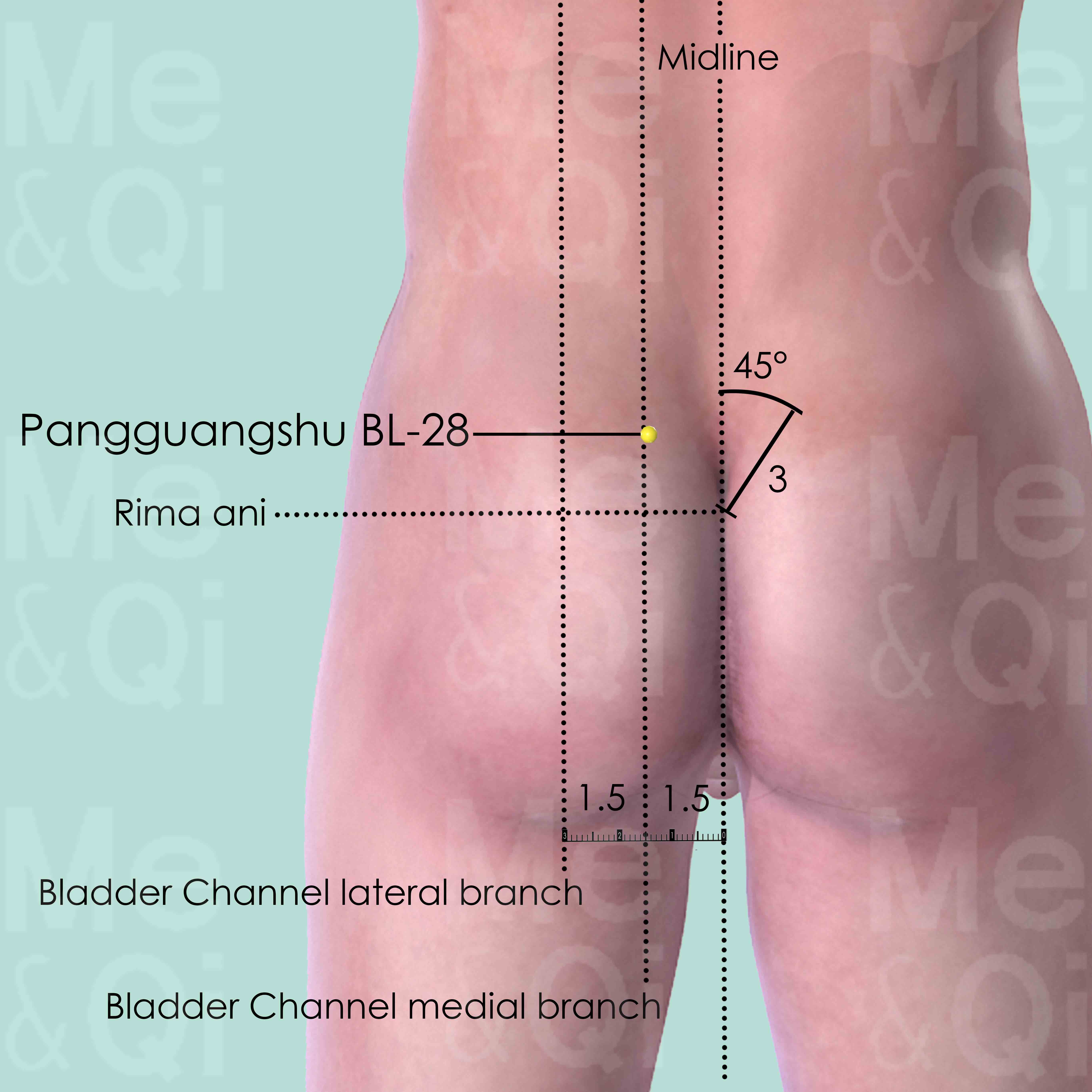
Pangguangshu BL-28
At the level of the 2nd posterior sacral foramen, 1.5 cun lateral to the posterior midline, in the depression between the medial border of the posterior superior iliac spine (PSIS) and the sacrum.
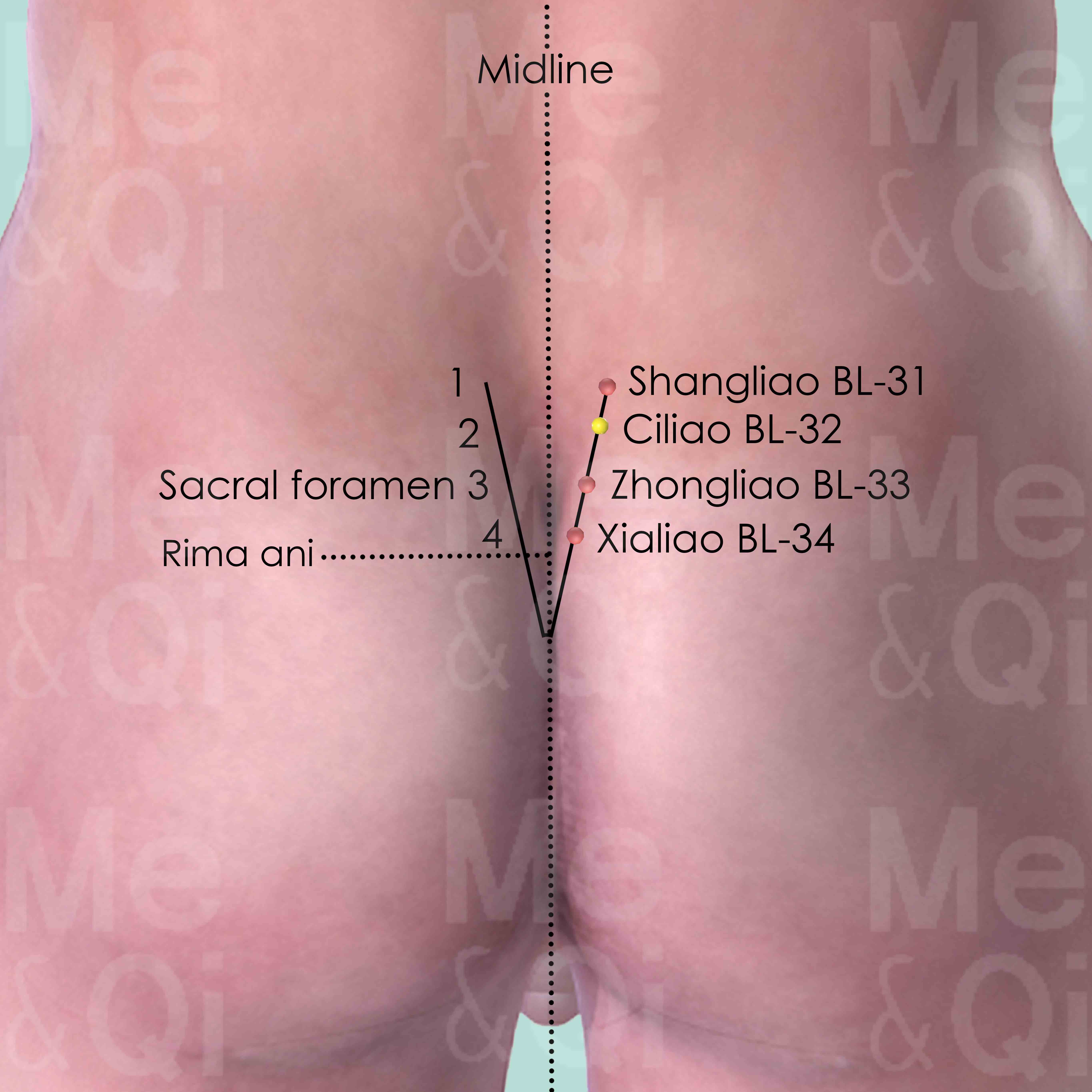
Ciliao BL-32
In the 2nd posterior sacral foramen, about midway between the posterior superior iliac spine (PSIS) and the midline.
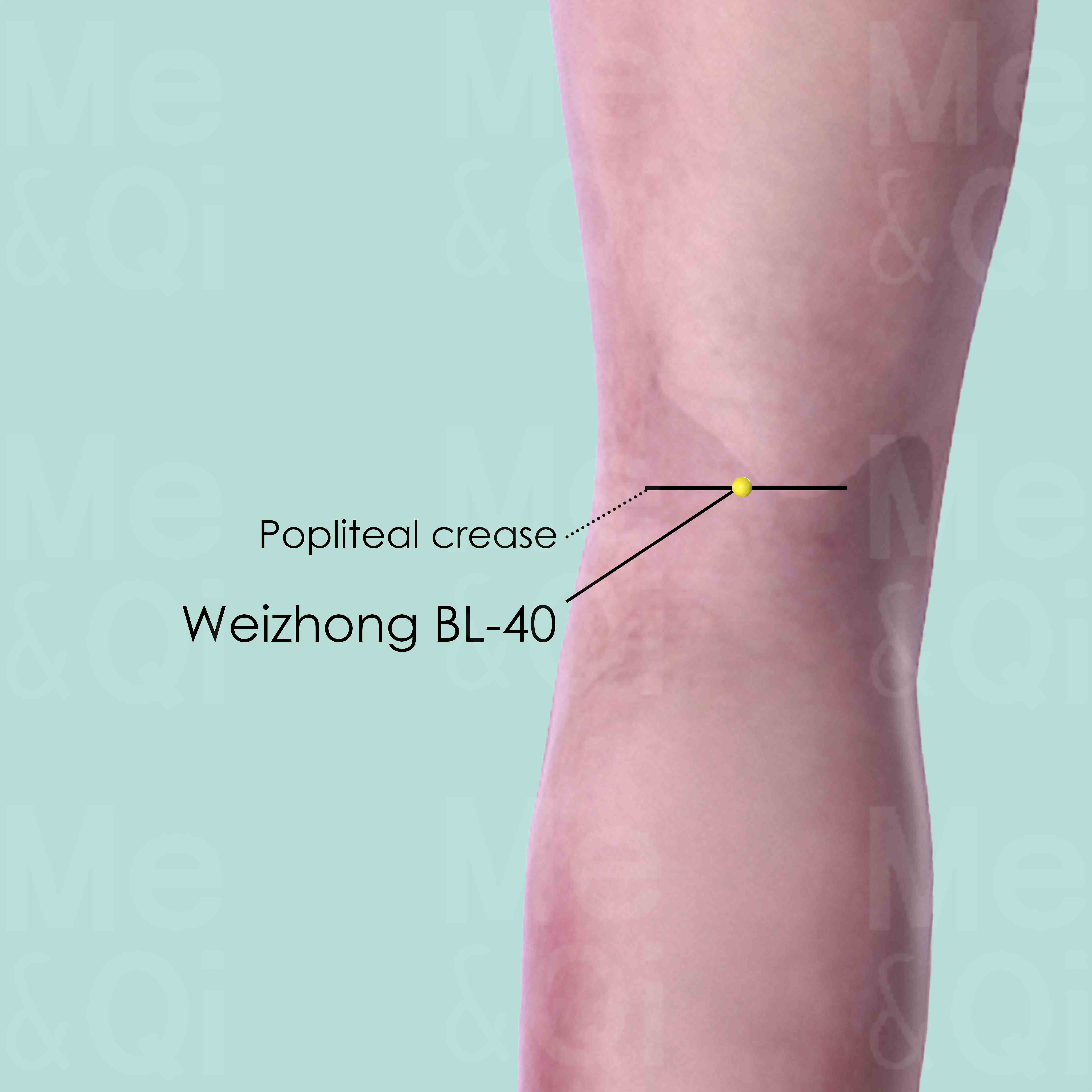
Weizhong BL-40
At the midpoint of the popliteal crease, between the tendons of biceps femoris and semitendinosus muscle.
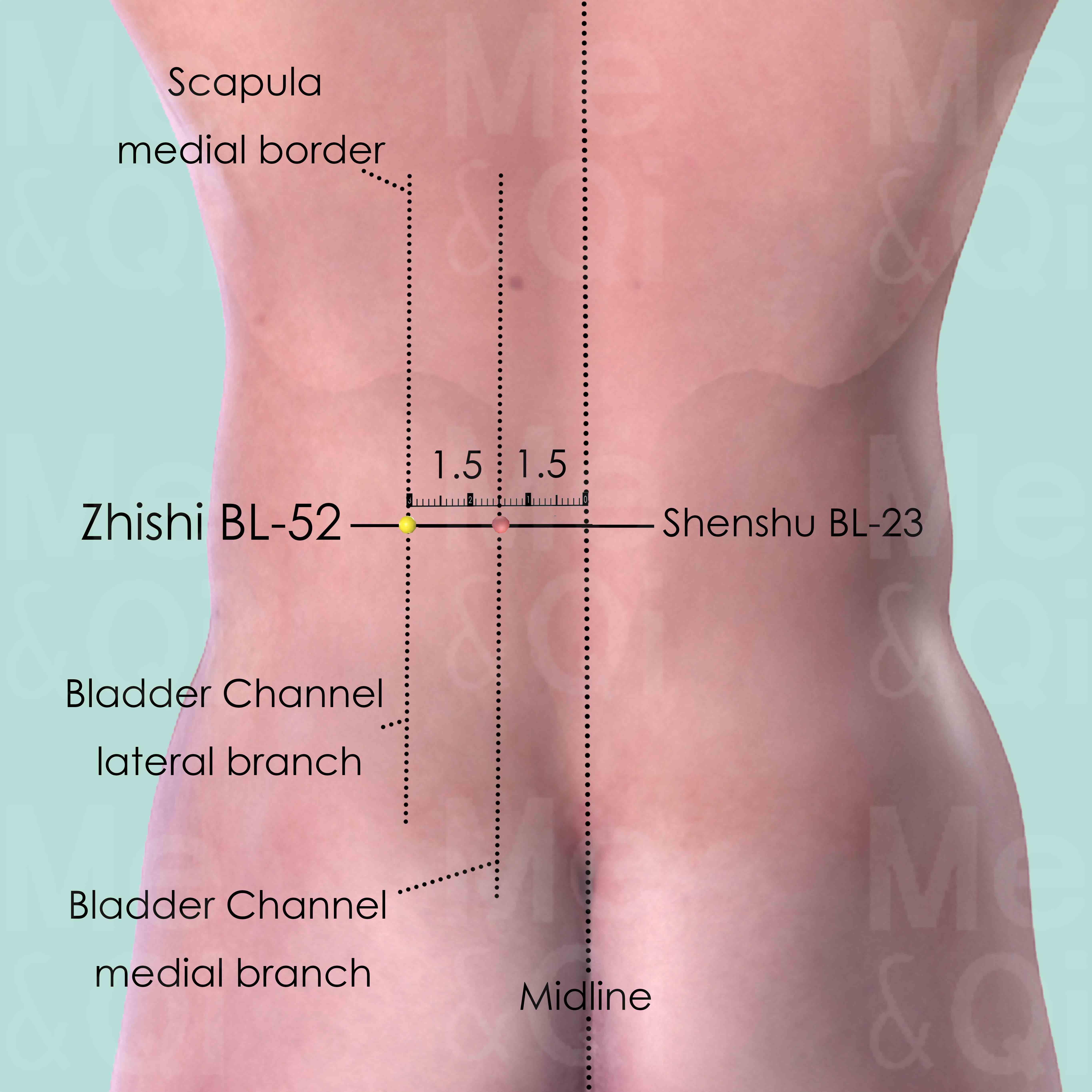
Zhishi BL-52
3 cun lateral to the lower border of the spinous process of the 2nd lumber vertebra (L2).
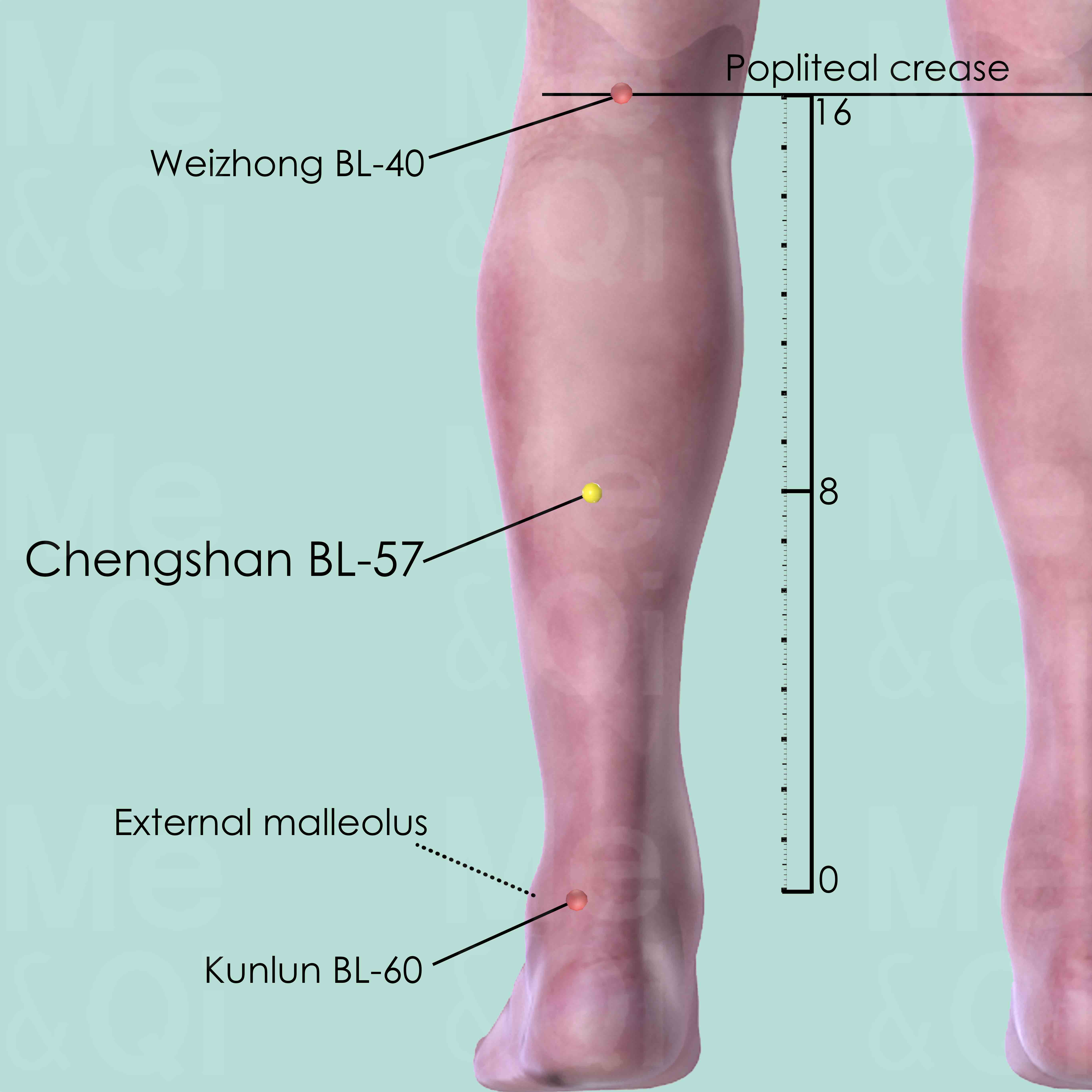
Chengshan BL-57
Directly below the belly of the gastrocnemius muscle and between the two heads of the muscle, on the line connecting Weizhong BL-40 and Kunlun BL-60, about 8 cun below Weizhong BL-40.
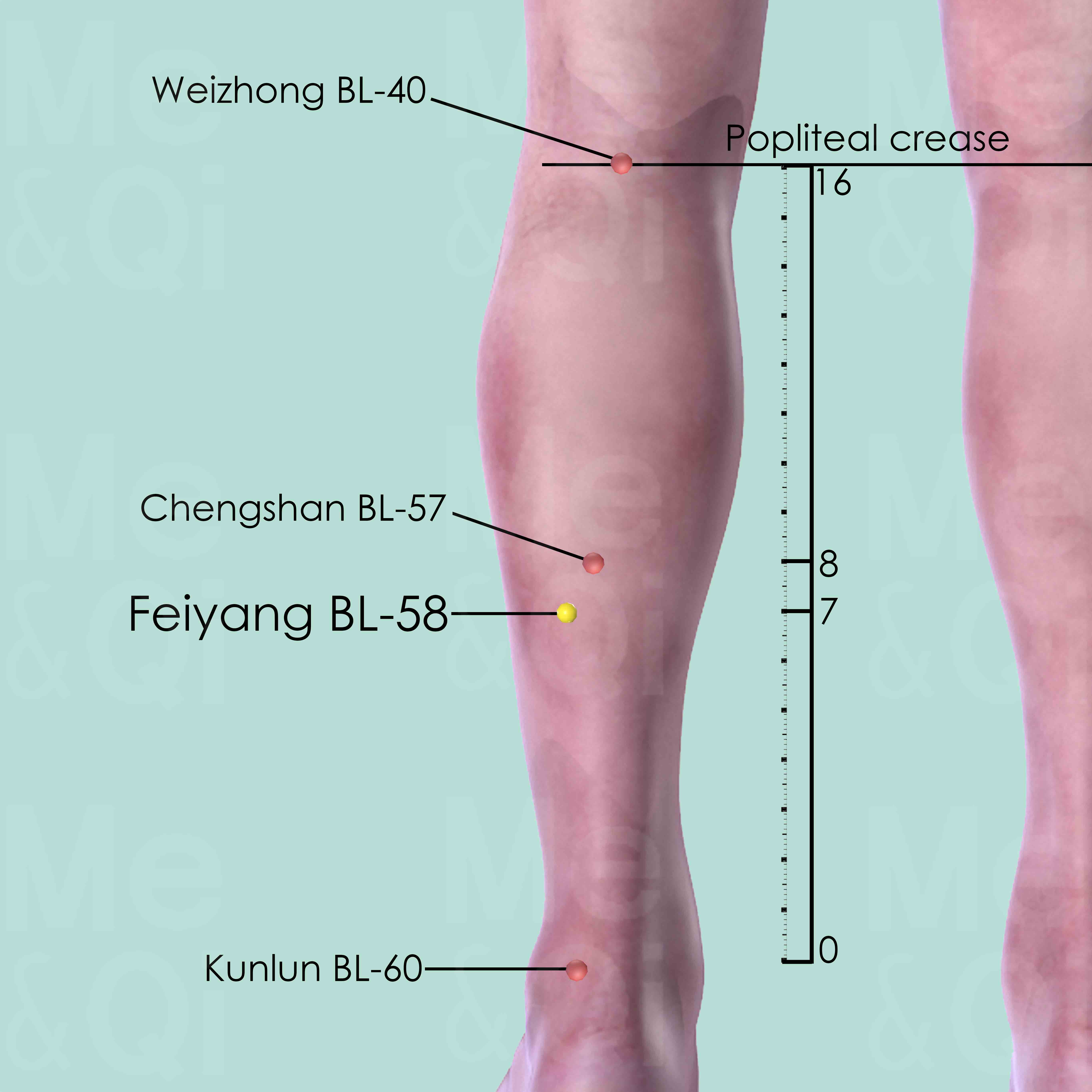
Feiyang BL-58
On the posterior border of fibula, about 1 cun inferior and lateral to Chengshan BL-57, 7 cun directly above Kunlun BL-60.
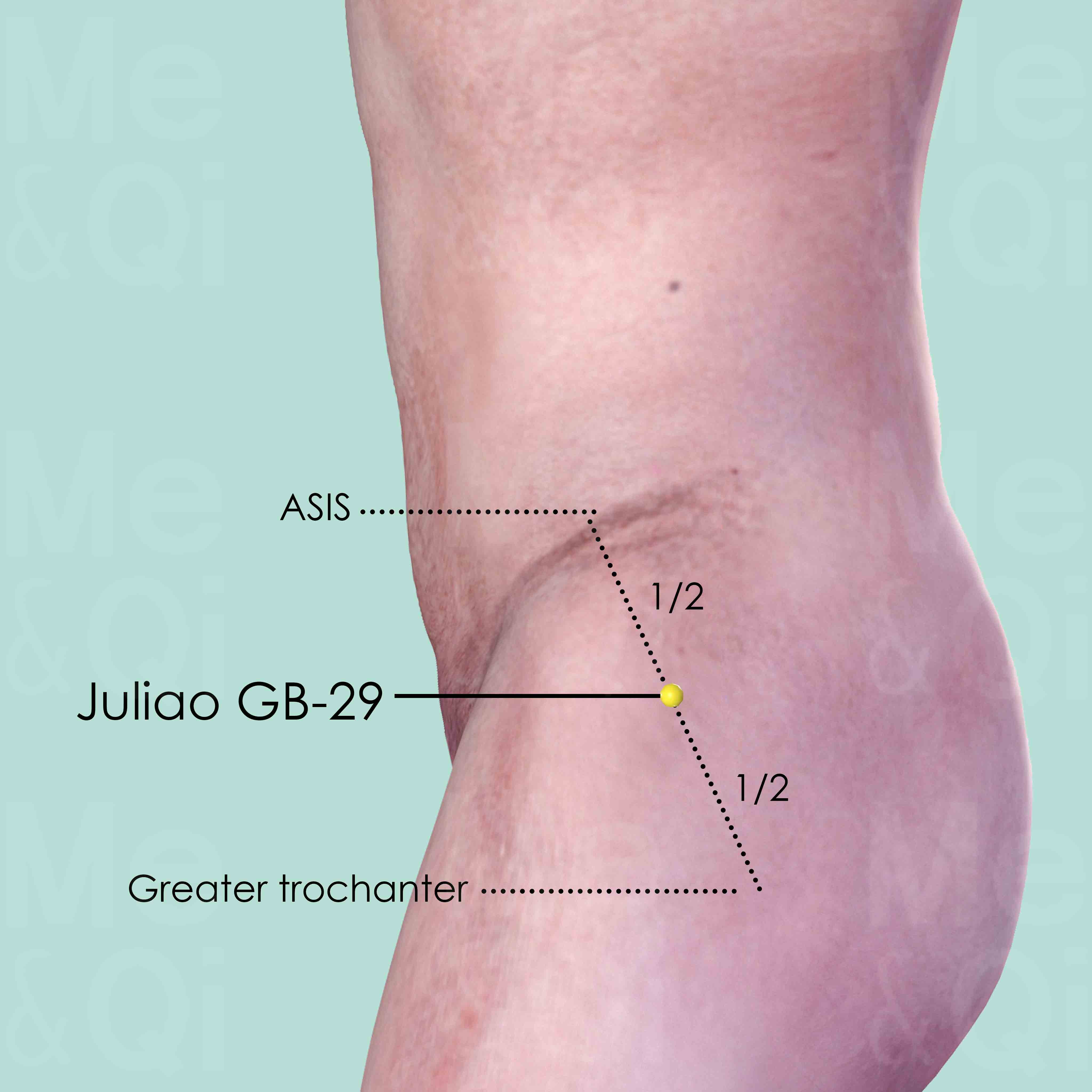
Juliao GB-29
Midway between the ASIS (anterior superior iliac spine) and the great trochanter, in the lateral recumbent position.
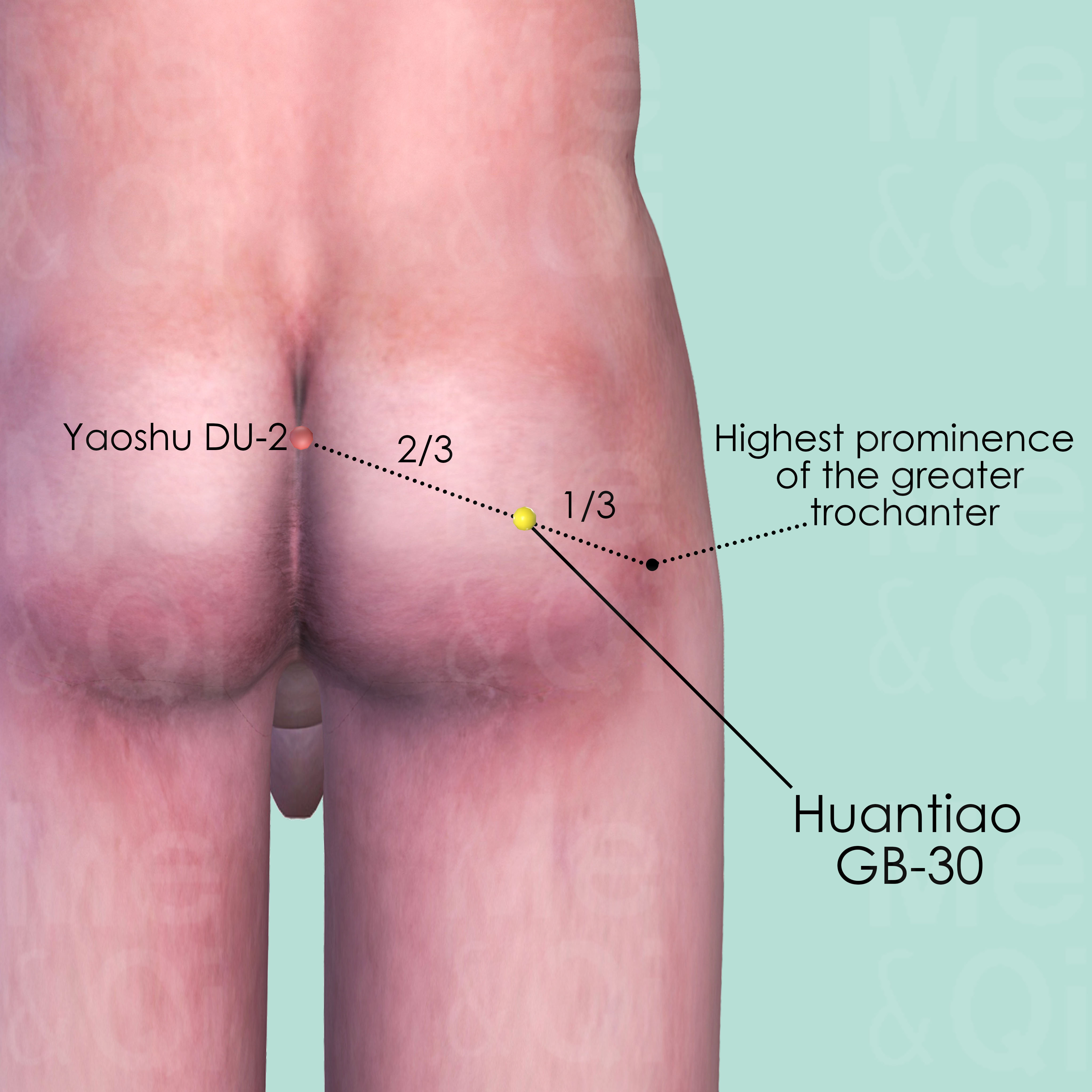
Huantiao GB-30
At the junction of the middle and lateral third of the distance between the great trochanter and Yaoshu DU-2 of the hiatus of the sacrum. When locating the point, put the patient in lateral recumbent position with the thigh flexed.
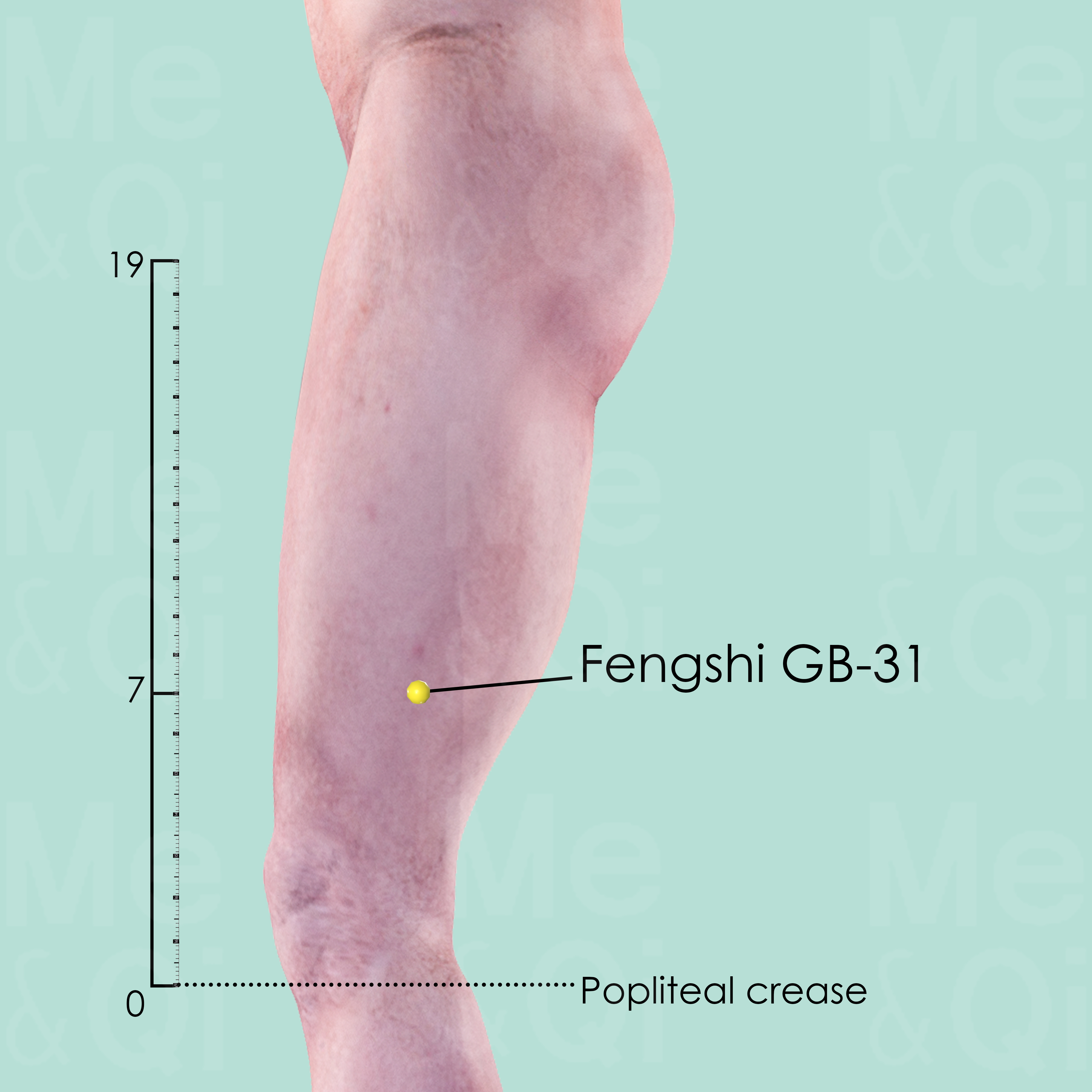
Fengshi GB-31
On the midline of the lateral aspect of the thigh, 7 cun above the transverse politeal crease.
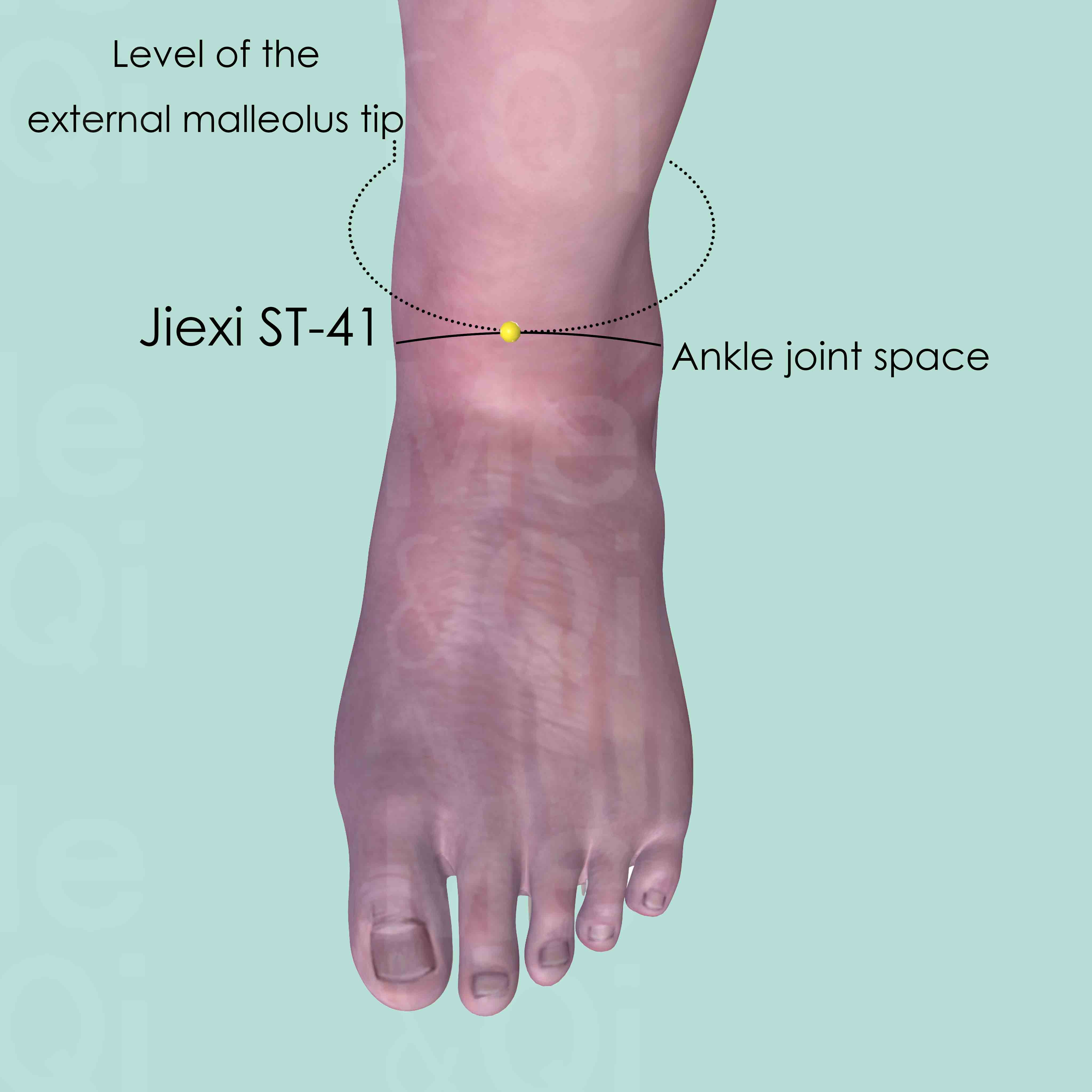
Jiexi ST-41
At the junction of the dorsum of the foot and leg, between the tendons of extensor digitorum and the extensor hallucis longus muscle. Approximately at the level of the tip of the external malleolus.
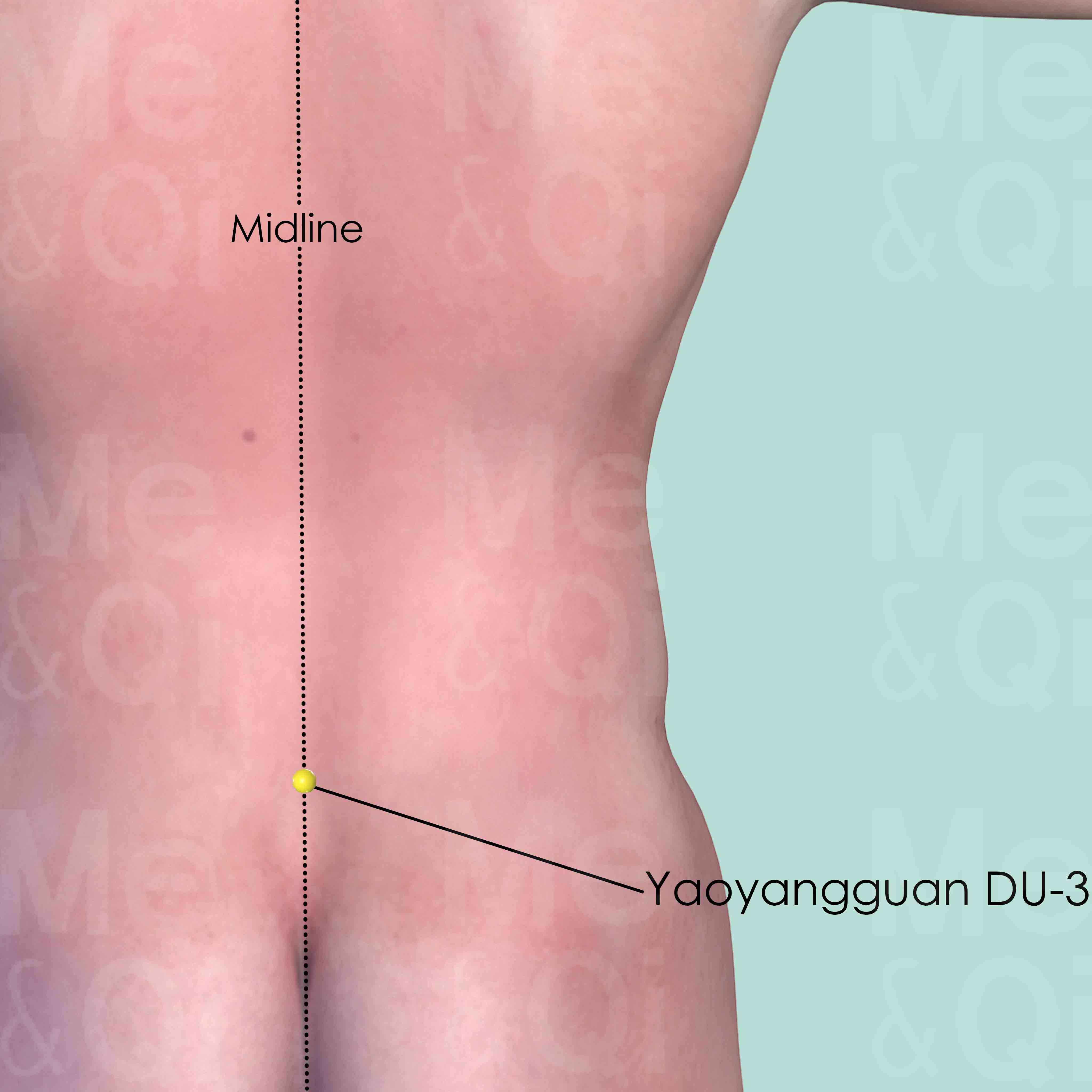
Yaoyangguan DU-3
On the lower back midline, in the depression below the spinous process of the 4th lumber vertebra (L4).
TCM Herbs for Sciatica
Explore below some TCM herbs used to address sciatica, organized by herb category.
- By Herb Category
- Warm/Acrid herbs that release the exterior
- Herbs that invigorate the blood
- Herbs that warm the interior and/or expel cold
- Tonic herbs for blood deficiency
- Herbs that dispel wind and dampness
- Tonic herbs for qi deficiency
- Herbs that drain dampness
Warm/Acrid herbs that release the Exterior
Sciatica can be treated by these herbs when there is a need to dispel external cold and warm the body, especially in cases where there is insufficient Yang energy internally.
One such herb is Cinnamon Twigs (Gui Zhi), a key herb in some formulas recommended for sciatica, like Gui Zhi Shao Yao Zhi Mu Tang.
Other herbs of this category are listed in the table below.
"Warm/Acrid herbs that release the Exterior" recommended for sciatica
| Herb | Formulas they belong to (if applicable) |
|---|---|
| Cinnamon Twigs (Gui Zhi) | Gui Zhi Shao Yao Zhi Mu Tang | Huang Qi Gui Zhi Wu Wu Tang | Wen Jing Tang |
| Ephedra (Ma Huang) | Ma Huang Tang | Ma Huang Xi Xin Fu Zi Tang | Wu Ji San |
| Angelica Roots (Bai Zhi) | Wu Ji San |
Herbs that invigorate the Blood
Sciatica can be treated by these herbs when it stems from stagnation or poor circulation of blood, helping to improve blood flow and alleviate related discomfort.
One such herb is Peach Kernels (Tao Ren), a key herb in some formulas recommended for sciatica, like Shen Tong Zhu Yu Tang.
Other herbs of this category are listed in the table below.
"Herbs that invigorate the Blood" recommended for sciatica
| Herb | Formulas they belong to (if applicable) |
|---|---|
| Peach Kernels (Tao Ren) | Shen Tong Zhu Yu Tang |
| Safflowers (Hong Hua) | Shen Tong Zhu Yu Tang |
| Szechuan Lovage Roots (Chuan Xiong) | Shen Tong Zhu Yu Tang |
Herbs that warm the Interior and/or expel Cold
Sciatica can be treated by these herbs if it is due to internal coldness or deficient Yang energy, working to warm the body and dispel cold.
One such herb is Prepared Aconite (Zhi Fu Zi), a key herb in some formulas recommended for sciatica, like Da Huang Fu Zi Tang.
Other herbs of this category are listed in the table below.
"Herbs that warm the Interior and/or expel Cold" recommended for sciatica
| Herb | Formulas they belong to (if applicable) |
|---|---|
| Prepared Aconite (Zhi Fu Zi) | Da Huang Fu Zi Tang | Zhen Wu Tang |
| Evodia Fruits (Wu Zhu Yu) | Wen Jing Tang |
Tonic herbs for Blood Deficiency
Sciatica can be treated by these herbs in cases of blood deficiency, working to nourish and replenish the body's blood supply.
One such herb is White Peony Roots (Bai Shao), a key herb in some formulas recommended for sciatica, like Dang Gui Shao Yao San.
Other herbs of this category are listed in the table below.
"Tonic herbs for Blood Deficiency" recommended for sciatica
| Herb | Formulas they belong to (if applicable) |
|---|---|
| White Peony Roots (Bai Shao) | Dang Gui Shao Yao San | Shao Yao Gan Cao Tang | Shu Jing Huo Xue Tang |
| Dong Quai (Dang Gui) | Shu Jing Huo Xue Tang |
Herbs that dispel Wind and Dampness
Sciatica can be treated by these herbs when it is due to the invasion or accumulation of wind and dampness, which often affects the muscles and joints.
One such herb is Pubescent Angelica Roots (Du Huo), a key herb in some formulas recommended for sciatica, like Du Huo Ji Sheng Tang.
Tonic herbs for Qi Deficiency
Sciatica can be treated by these herbs when stemming from a lack of vital energy or Qi, helping to boost energy and overall vitality.
One such herb is Milkvetch Roots (Huang Qi), a key herb in some formulas recommended for sciatica, like Huang Qi Gui Zhi Wu Wu Tang.
Herbs that drain Dampness
Sciatica can be treated by these herbs when caused by excessive dampness in the body, aiding in eliminating damp through diuretic action.
One such herb is Poria-Cocos Mushrooms (Fu Ling), a key herb in some formulas recommended for sciatica, like Wu Ji San.

